How To Eat Sushi Properly - The Basics And Tips

The sushi experience gets even more delicious when you know how to eat sushi the right way. Learn how to enjoy this classic Japanese food like a local, how to dip your sushi into soy sauce, what to do about wasabi, and more.
How to Order and Eat Sushi

Photo by Pixta
Dating back to around the 1800s, sushi has been part of Japan's culture for centuries and famous around the world for decades. The best sushi is found in Japan, at restaurants, but no matter where you eat sushi, it will taste better when eaten properly.
This article covers how to properly eat sushi at different types of restaurants, at home, or whenever you may be enjoying this traditional food.
The Correct Way to Eat Sushi

There are certain customs of eating sushi that are not very well-known, even to people living in Japan.
Sushi is eaten in two ways: with chopsticks, or by hand. In the 19th century, sushi is was considered a fast food-like dish, so it was consumed as finger food. Using chopsticks is more common now, however.
How to Eat Sushi with Chopsticks
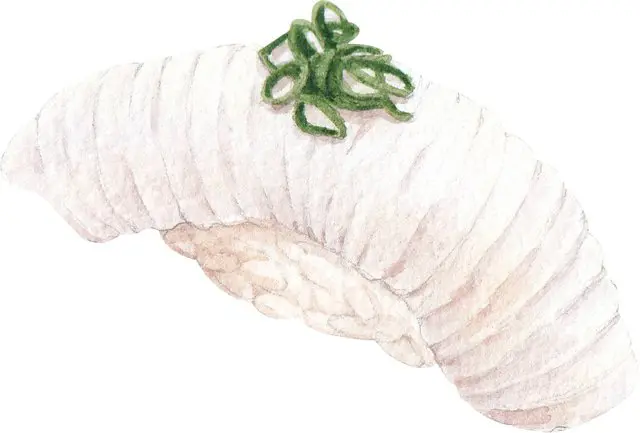
photo by pixta
To enjoy sushi, grab it with your chopsticks and eat it up. When using condiments like soy sauce, turn the sushi upside down to dip the fish or topping part in the soy sauce. If you dip the rice part in the soy sauce, the rice will absorb too much soy sauce, and the sushi will be too salty.
However, turning over the sushi with your chopstick is pretty difficult for beginners. For those of you who are not chopstick experts yet, you can use your hand.
How to Eat Sushi by Hand
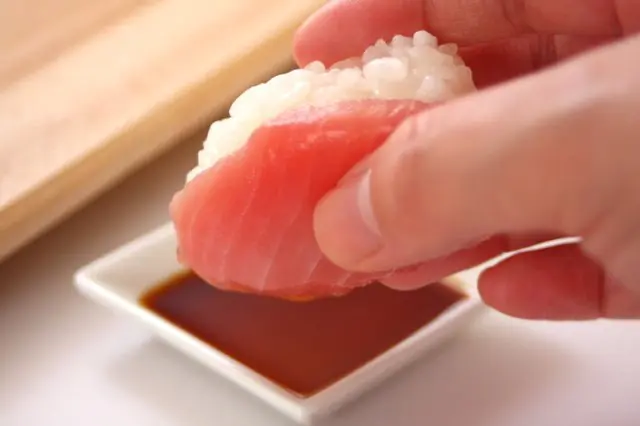
photo by pixta
Pick up the sushi with your hand. Turn the sushi upside down with your thumb, forefinger, and middle finger so that the fish part will fall on your tongue. This is said to be the proper way to eat sushi: the rice part won’t get soaked in the soy sauce, allowing you to eat the sushi beautifully.
Eating Sushi - Step-by-Step

For those looking for a full cultural experience, pay attention to what you order and when. Start with white fish and delicate flavors first, before you move onto strong flavors like fatty tuna. This is because you won’t be able to enjoy the delicate flavors of white fish after you have eaten richer fish such as tuna and conger eel.
Sea bream and flatfish are two examples of common white fish at sushi restaurants in Japan. These choices are great for the beginning of a meal.
After enjoying the gentle fish flavors, savory tuna and other stronger flavors.
This is a standard way of eating sushi, but you don’t have to obey this rule if you prefer fish other than white fish or silver-skinned fish.
Wasabi and Sushi
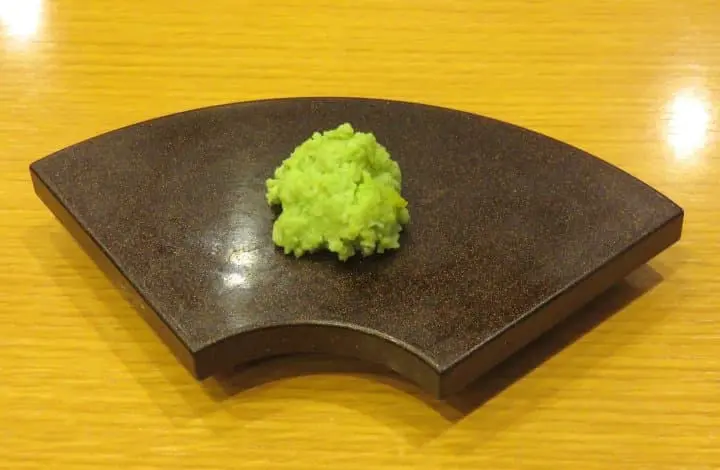
Wasabi comes with most sushi, put in between the topping and rice. You can also get extra wasabi by asking the chef or by picking it up off the conveyor belt at a kaiten sushi restaurant.
However, The spicy burning sensation associated with eating too much wasabi can be really painful, so please be careful. If you prefer non-wasabi sushi, you can ask the itamae-san to make your sushi without wasabi.
Ginger to Cleanse Your Palate
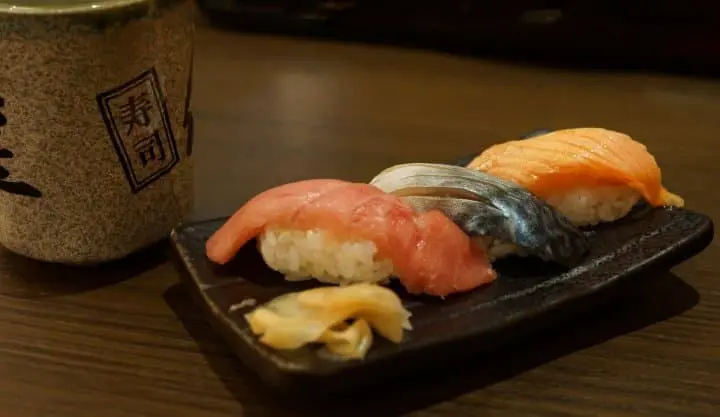
When eating sushi, you can have whatever you want in whatever order you like. However, it is true that delicate tastes may become confused if you still have the previous taste lingering on your tongue. In such cases, be sure to reset your taste buds with pickled ginger, or "gari," before advancing to the next dish.
“Gari” is thinly sliced ginger pickled in sweet vinegar. It is sharply refreshing and has a sour-sweet taste. It erases the flavor of whatever you had last in your mouth so you can refresh your taste-buds after one piece of sushi and make yourself ready for the next piece.
You can also eat sushi with a piece of soy sauce-dipped ginger on top. Gari also has a sterilizing effect and helps to prevent food poisoning. It is usually in a black or red box in front of each diner's setting and is free, along with the tea.
How to Eat at a Conveyor Belt Sushi Restaurant
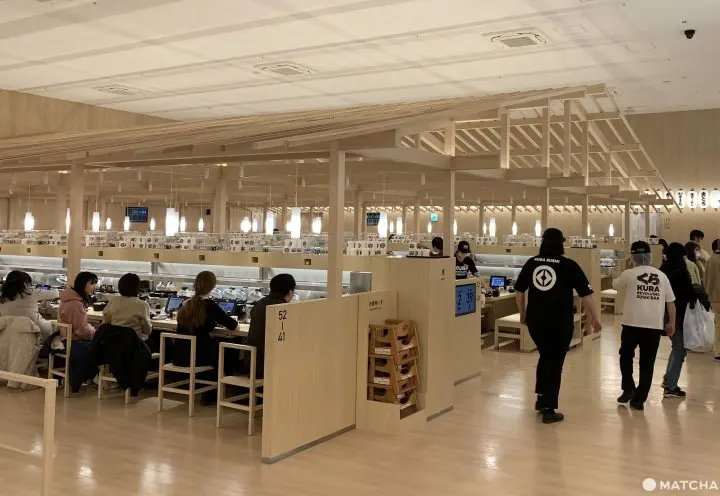
At a conveyor belt sushi restaurant, or kaitzen zushi restaurant, small plates with all different types of sushi line up on the conveyor belt. People see the sushi, choose whichever plate they want to eat, and pick it up from the conveyor belt. Then, enjoy eating it with chopsticks and some soy sauce on the side.
The half self-service style at conveyor belt sushi makes the price of this kind of sushi restaurant reasonable––around 100 yen to 300 yen per plate for a standard type of sushi. The prices of each plate are denoted by the color of the plate. Most of the time, the plate will contain two pieces of sushi.
If the sushi you want doesn’t come around on the conveyor, or you if you want some soup or drinks, you need to order them. How you order these dishes at the table varies from shop to shop, but in general, there will either be an order form on the table with a pen, a built-in computer system, or even a touchscreen tablet menu. You simply select what you want and the quantity, and in the case of a paper slip, give this to the staff.
Even if the particular sushi is already on the conveyor belt, you can order a new one. If you want a really fresh piece of sushi, I recommend ordering it even if it takes a little time. Some restaurants have snacks, drinks, and desserts on the belt conveyor as well.

To see what you can order and their names, check the menu that is placed on each table. Some restaurants in Japan, like Sushiro and Kurazushi
Enjoy Eating Sushi the Right Way
Sushi is a must-try in Japan and fun to enjoy, but there are proper ways to eat it that add to the experience. Then again, you don’t need to be too cautious about the rules, just enjoy yourself! When you find yourself in Japan, head over to a sushi shop, soak up the atmosphere and treat yourself to some amazing sushi.
Read also
This is a rewritten article of an article originally published in 2014.
慶應大学法4年生/東京生まれ中国アメリカ育ちのなんちゃって都会っ子/美味しいお米と伊勢丹が大好き/Matcha Chinaのほうもよろしくお願いします:)
































![[2026] Top 5 Strawberry Picking Spots in Tokushima, Naruto| Farms and Access Guide for January to May](https://resources.matcha-jp.com/resize/720x2000/2025/03/06-227165.webp)
![[Yamanashi/ Hokuto City] 4 Hot New Spots Opening in 2026](https://resources.matcha-jp.com/resize/720x2000/2025/12/12-252747.webp)


